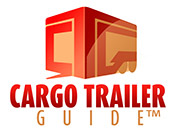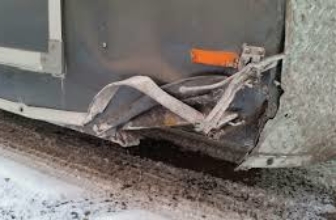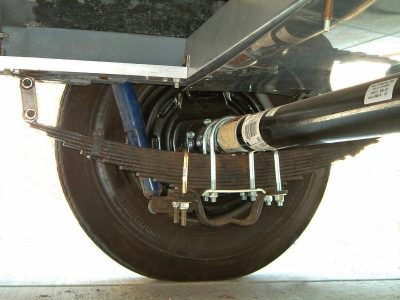
Torsion or Leaf Spring
Trailers are normally built with either leaf spring axles or torsion axles.
What type of axle is best for cargo trailers, leaf spring or torsion?
What type of axles do top cargo trailer brands use?
Opinions vary on this subject and are based largely on personal preference.
The best value for your cargo trailer really depends on how you intend to use your trailer.
Leaf Spring
Leaf spring axles are the most common axle found on trailers due to their affordability. They have flat, curved leaves stacked on top of each other in several layers. The leaf springs themselves are attached directly to the trailer frame, not the axle.
Leaf springs provide a spring like damping action.
Unlike torsion axles, leaf spring axles are bolted to the leaf spring. The leaf spring is attached at both ends to the trailer.
Leaf spring axles are less compact than torsion axles and take up more space and add more weight to your trailer.
If a tire on your trailer goes over a pothole or lower place in the road, other tires on your trailer may not remain in contact with the road surface. This is because the leaf springs do not function as independently as torsion axles.
Although they may need more maintenance than torsion axles, their parts are replaceable.
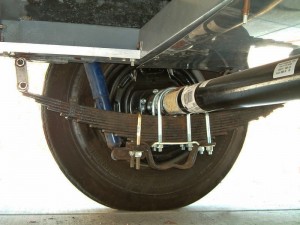
Torsion
Torsion axles are attached directly to the trailer frame thereby providing more trailer rigidity. The frame is stiff and this reduces flex in cross winds and on rough roads.
Unlike leaf spring axles that have curved metal leafs stacked on top of each other, torsion axles have a straightforward, attached construction with adjustable ride height and a rubberized suspension system. Four rubberized cords are inside the axle housing which handle suspension travel and shock absorption. As each wheel moves up and down, the rubber cords compress offering an even wheel suspension system for a smooth ride.
Torsion axles may not perform as well in extremely cold weather as their rubber will lose its elasticity.
Torsion axles are less likely to corrode as each torsion axle tube is galvanized inside and out and there is no metal-to-metal contact.
Because of the way they are attached, torsion axles do not have replaceable or repairable parts.
If the axles ever fail you will have to replace them with new axles. However, the only maintenance that you need to worry about is the normal wheel bearing maintenance and lubrication.
If a tire on your trailer goes over a pothole or low place in the road, the other tires move up and down independent of each other to help maintain contact with the road surface.
With a fully loaded trailer, this can help prevent overloading one tire/wheel with too much weight.
Also, torsion axles tend to be lower to the ground while leaf spring axles will have more clearance. A torsion axle, with its lower center of gravity will offer improved handling and better cornering.
Torsion axles will have a better ride than leaf spring axles because torsion axles are cushioned with rubber, and they require less maintenance than leaf spring axles will.
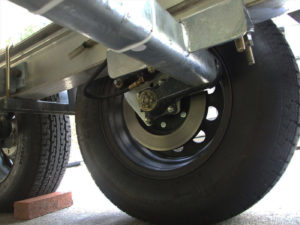
Leaf spring axles are more durable, less expensive and easier to repair. Each has their advantages and both work well.
No matter which one you choose, both will provide you with good service. It is best to make your decision based on how much you will use your trailer and your budget.
